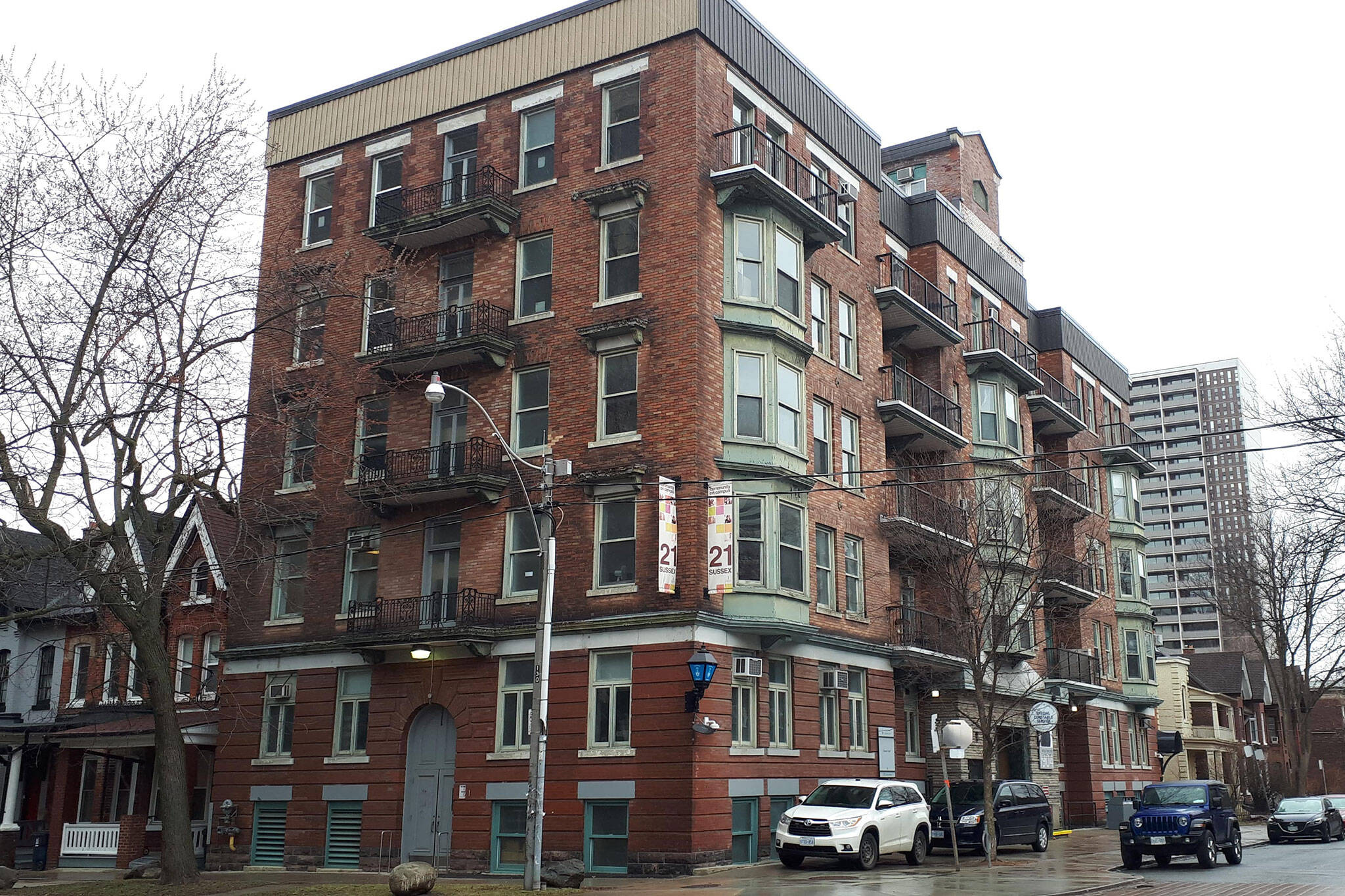
A brief history of early apartment buildings in Toronto
Communal living (boarding houses, barracks, etc.) have existed in Toronto since the city's inception in the late 18th century. However, the first purpose-built apartment buildings - originally known as apartment houses - did not emerge in Toronto until 1899.
The emergence of purpose-built apartment buildings within Toronto was due to both their development and proliferation in other North American cities, as well as due to a rapid increase in the population of Toronto within the first decades of the 20th century that outpaced the availability of single-family dwellings.
1899 saw the issuance of the building permit for the St. George Mansions at the southwest corner of Harbord Street and St. George Street.
The St. George Mansions were completed by 1904 and were considered Toronto's first purpose-built apartment building. Richard Dennis notes in Toronto's First Apartment-House Boom: An Historical Geography, 1900-1920 (1989) that the earliest apartment buildings in Toronto were "large-scale luxury blocks" rather than middle-class efficiency apartments.
Dennis (1989) further notes that "by 1907, when the first list of apartment houses was published in the city directory, eight buildings were listed" (14).
Post-1907 saw a steady increase in the number of apartment buildings within Toronto alongside a building boom of apartments in the 1910s, albeit the post-1907 buildings were often less luxurious, smaller, and more utilitarian in scheme.
By 1918, City of Toronto Directories listed at least 290 apartment buildings within the City of Toronto.
ERA Architects note in their Toronto Building Typology Study: The Pre-War Apartment Building - Church-Wellesley Village (2018) that early apartment buildings in Toronto were often constructed on corner lots (including both streets and laneways) and had their first (ground) floor half a storey above street level as to allow basement suites and spaces to receive increased light.
ERA Architects (2018) also note that the names selected for early apartment buildings in Toronto often "evoked British royalty, a certain level of class, and even American symbols of modernity."
By 1912, purpose-built apartment buildings in Toronto were the subject of significant controversy due to their alleged facilitation of immorality (partly due to their appeal to individuals who could live on their own without constant supervision and restrictions on guests and various activities); privacy and sanitation related concerns; the emergence of landlord legislation; perceived risks to property values in the surrounding area; a loss of neighbourhood greenspace with the larger building footprints occupying most of the lot; and societal bias towards renters versus owners.
Calls emerged to prohibit the construction of new apartment buildings within pre-established residential areas. Eventually, Toronto City Council passed Bylaw 6061 to prohibit the construction of apartment buildings on specific streets (namely established streets that mostly contained houseform dwellings).
Developers could still appeal on a case-by-case basis for an exemption. Another bylaw was passed to limit the size of the buildings and mandate a set amount of outdoor space on the lot.
The Chief Medical Officer of Toronto - Dr. Charles Hastings (1858-1931) - also became involved in the debate with a public health focus on the tenement-like conditions in some Toronto apartment buildings.
In 1911-1912, Dr. Hastings testified to Toronto City Council with particular concerns over overpopulation, poor ventilation, the risk of fire, and some apartment building's internal rooms having no windows.
Controversy later emerged over Bylaw 6061, namely that the prohibition of new buildings was causing rents in existing buildings to skyrocket (some rents increased by 10% to 35%).
A collapse in the property market in 1913/1914 and the advent of World War I resulted in a shift of public focus away from the construction of new apartment buildings in Toronto.
During World War I fewer apartment buildings were constructed in Toronto. This was followed by an increase after the war that peaked with a building boom in 1928.
However, construction of new apartment buildings then declined over the following years due to the Great Depression.
Notably, during this period, the construction of new apartment buildings in many areas required individual bylaws to be passed allowing an exemption for each site.
Bylaw 6061 was altered in 1941 on the advice of the City Solicitor who considered it "was illegal for the Council to authorize violations of residential bylaws by passing amending by-laws, if such action was taken for the benefit of private individuals, and not in the general public interest."
Dennis (1989) further discerns that post-1941 the practice continued but "whole blocks or streets, rather than individual lots, were specified whenever an exemption was made."
Following World War II, the first apartment high-rise buildings were built in Toronto in the 1950s to 1970s. Condominiums first emerged in Toronto in the 1970s and 1980s.
Adam Wynne
Latest Videos
Latest Videos
Join the conversation Load comments







